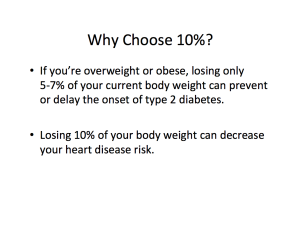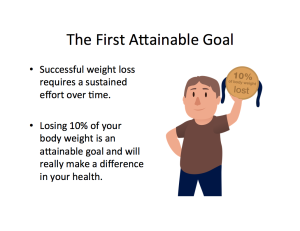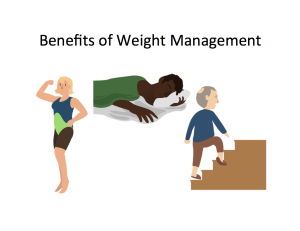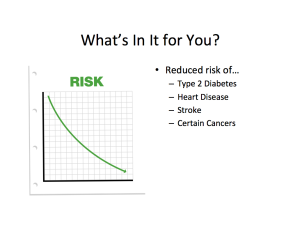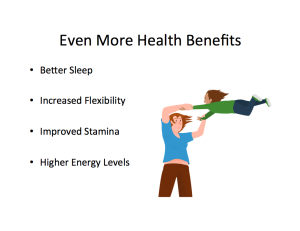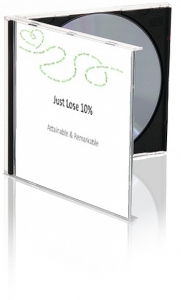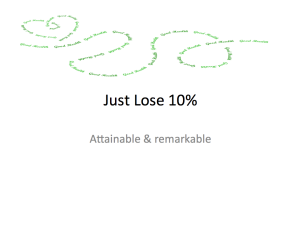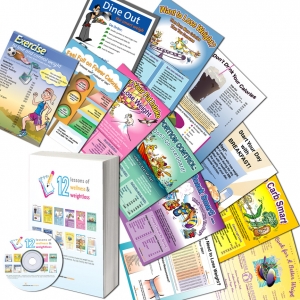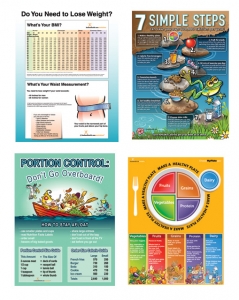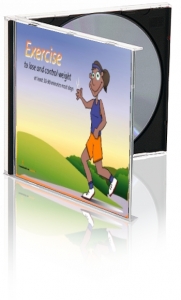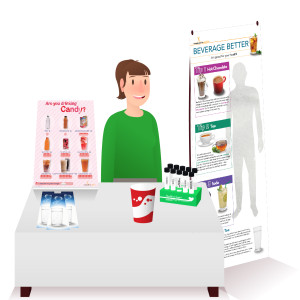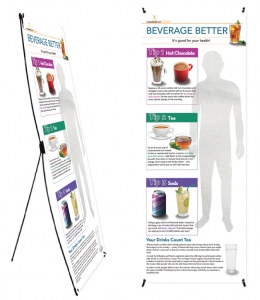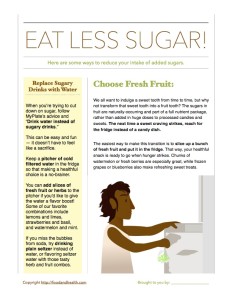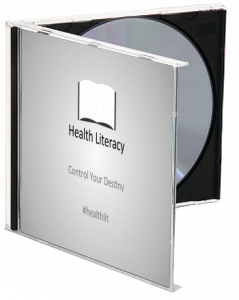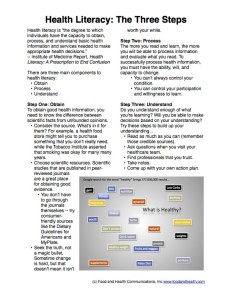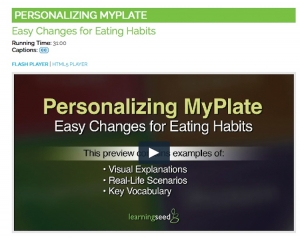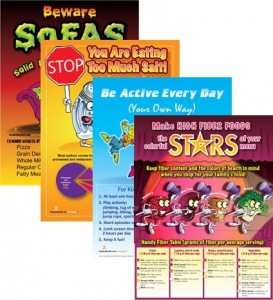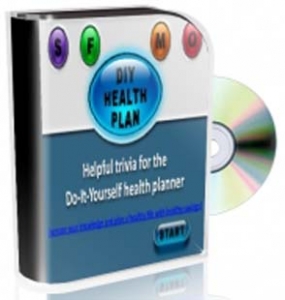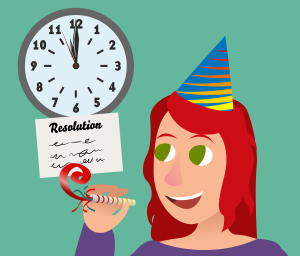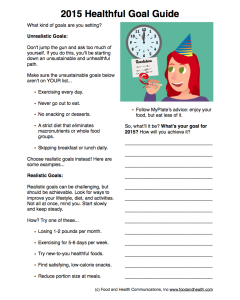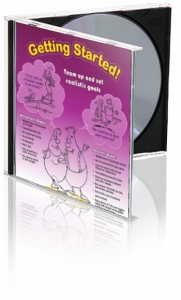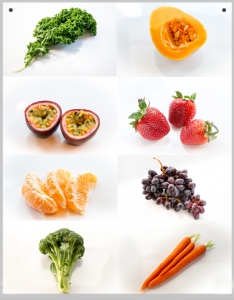It’s time for an exclusive look at of the most popular new presentations in the Nutrition Education Store. The Just Lose 10% PowerPoint presentation covers ways to live a healthful lifestyle while successfully managing your weight. Emphasizing the latest health and nutrition research, this life-changing presentation has been a hit for many dietitians and other health educators.
Today this blog will feature 2 of the sections in this show, just for you, for free. The full rundown includes…
- Assess Your Weight
- Set Your Goal
- Benefits of 10% Loss
- Weight Control 101
This post features the Set Your Goal and Benefits of 10% Loss sections. Are you ready for this?
Speaker’s Notes: Okay, first things first. Why choose 10%? Why is this the goal of the show? Well, the answer is twofold. One, if you’re overweight or obese, losing only 5-7% of your current body weight can prevent or delay the onset of type 2 diabetes. And two, losing 10% of your body weight can decrease your heart disease risk. Both of these are key for a long and healthy life. Improve your health with a little weight management!
Speaker’s Notes: Another reason to set “lose 10% of your body weight” as a weight management goal is that successful weight loss requires a sustained effort over time. Quick fixes are often hard to keep up and make it easy to backslide into less healthful habits. That’s why setting a goal is so important – it gives you something to strive for. And losing 10% of your body weight is attainable and will make a significant difference to your health.
Speaker’s Notes: Let’s take a closer look at the benefits of managing your weight well.
Speaker’s Notes: So, what’s in it for you? Why is it so important to reduce your weight if you’re overweight or obese? The short answer is that it’s key for your health. When you get your weight into a healthy zone, you reduce your risk of heart diseases like hypertension or even a heart attack. You also reduce your risk of stroke, certain cancers, and type 2 diabetes. This in turn means that you are more likely to live longer, while being less likely to have to take medications to combat these chronic conditions. Getting to skip those medications further improves your quality of life.
Speaker’s Notes: These are all benefits that accompany a healthful lifestyle and gradual weight loss. When you adopt a healthful lifestyle in your quest to manage your weight, you are more likely to sleep better, have more stamina, have more energy, improve your flexibility, and find it easier to do the things you love.
Do you like what you see? There’s a lot more in the show — over 35 slides of the latest research about weight management, health, and wellness. Check out the full presentation!
And here’s a PDF copy of the slides we featured today…
Remember, we’re here to help you look your very best, right now. Don’t miss these other great weight management resources…



